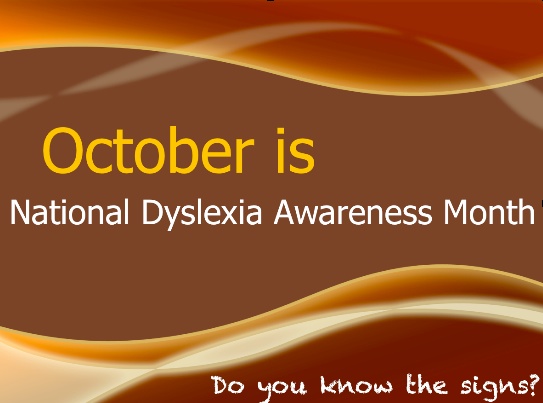State Policies That Address Dyslexia [web resource]
 The National Center on Improving Literacy features a 50-state overview of dyslexia requirements, initiatives and legislation, which can be filtered to show state screening requirements.
The National Center on Improving Literacy features a 50-state overview of dyslexia requirements, initiatives and legislation, which can be filtered to show state screening requirements.
Legislation in 2019
- Some states began to test dyslexia screening programs. Colorado B. 1134 (enacted) creates a pilot program to screen and identify dyslexia in students enrolled in kindergarten through third grade. Similarly, District of Columbia B. 23-0150 (pending) would establish a dyslexia screening and intervention pilot program for elementary school students.
- Several states tasked local school districts and boards with developing and providing dyslexia screenings. Maryland B. 734 (enacted) requires local boards to screen students for dyslexia in kindergarten and first grade, beginning in the 2020-21 school year. Montana S.B. 140 (enacted) requires districts to establish procedures to identify dyslexia and ensure students are evaluated for special education and related services.
- Other states gave different organizations some responsibilities for screenings. North Dakota B. 1461 (enacted) requires the superintendent of public instruction to establish and operate a dyslexia screening and intervention program, and it provides requirements for districts to participate.
- Mississippi B. 1193 (failed) would have reimbursed districts and parents for the costs of additional comprehensive psycho-educational screenings that result in a dyslexia diagnosis, if initial screenings failed to correctly identify a student.
Interventions
State policies are requiring interventions, many of which are rooted in recent research on best practices for supporting students with dyslexia.
- Alabama B. 388 (enacted) requires districts to offer various dyslexia interventions, including before- and after-school reading programs, small group reading sessions during the school day, summer reading camps and individual home reading improvement plans.
- New Mexico B. 398 (enacted) requires districts to provide evidence-based interventions with progress monitoring.
Staff Resources
In states and districts where teachers and other employees are required to identify students with dyslexia or provide interventions, state policies are ensuring they have the proper training and resources to effectively do so.
- Arizona B. 1318 (enacted) approaches training in a few ways. First, it requires the Arizona Department of Education to annually develop a list of dyslexia training opportunities that count toward continuing education credits for teachers. Secondly, it requires each district to have at least one K-3 teacher who has received dyslexia training. Finally, it requires that reading instruction requirements for teacher certification candidates include dyslexia training.
- New York S. 2675 (failed) would have allowed the commissioner of education to certify or require training of teachers, instructors and administrators in dyslexia.
- Vermont H. 406 (failed) would have required educators applying for their initial license or renewal with the Vermont Standards Board of Professional Educators to complete awareness training on indicators of dyslexia and interventions.
What’s Happening in California
Legislation
California Assembly Bill 1369 and Chapter 647
Assembly Bill 1369 requires “the Superintendent of Public Instruction to develop, and to complete in time for use no later than the beginning of the 2017-18 academic year, program guidelines for dyslexia to be used to assist regular education teachers, special education teachers, and parents to identify and assess pupils with dyslexia, and to plan, provide, evaluate, and improve educational services, as defined, to pupils with dyslexia.” The bill also requires “the Superintendent to disseminate the program guidelines through the State Department of Education’s Internet Web site and to provide technical assistance regarding their use and implementation to specified persons. Existing regulations adopted by the State Board of Education include specific basic psychological processes in the definition of ‘specific learning disability.'” This bill requires “the state board to include ‘phonological processing’ in that description of basic psychological processes.”
Screening
AB 1369 states, “Existing law requires all children with disabilities residing in the state, regardless of the severity of their disabilities, and who are in need of special education and related services, to be identified, located, and assessed. Existing law provides that a pupil who is assessed as being dyslexic and meets certain eligibility criteria for the federal Individuals with Disabilities Education Act category of specific learning disabilities is entitled to special education and related services.” AB 1369 charges the Superintendent with developing guidelines that “assess pupils with dyslexia, and to plan, provide, evaluate, and improve educational services to pupils with dyslexia. For purposes of this section, ‘educational services’ means an evidence-based, multisensory, direct, explicit, structured, and sequential approach to instructing pupils who have dyslexia.”
Pre-service
California does not have pre-service legislation related to dyslexia.
In-service
California does not have in-service legislation related to dyslexia
Intervention
AB 1369 states, “Existing law requires all children with disabilities residing in the state, regardless of the severity of their disabilities, and who are in need of special education and related services, to be identified, located, and assessed. Existing law provides that a pupil who is assessed as being dyslexic and meets certain eligibility criteria for the federal Individuals with Disabilities Education Act category of specific learning disabilities is entitled to special education and related services.” AB 1369 charges the Superintendent with developing guidelines that “assess pupils with dyslexia, and to plan, provide, evaluate, and improve educational services to pupils with dyslexia. For purposes of this section, ‘educational services’ means an evidence-based, multisensory, direct, explicit, structured, and sequential approach to instructing pupils who have dyslexia.”
Literacy State-identified Measurable Result (SIMR) – Part B
Resources
California Dyslexia Guidelines
International Dyslexia Association Northern California
International Dyslexia Association Southern California
Learn More
Explore dyslexia legislation and related initiatives using the interactive map on the National Center on Improving Literacy website.
Source: National Center on Improving Literacy | State of Dyslexia, https://improvingliteracy.org/state-of-dyslexia | Copyright © 2019 National Center on Improving Literacy
To schedule an evaluation or to get advice about your child’s challenges, call or email a CHC Care Coordinator at 650.688.3625 or careteam@chconline.org





